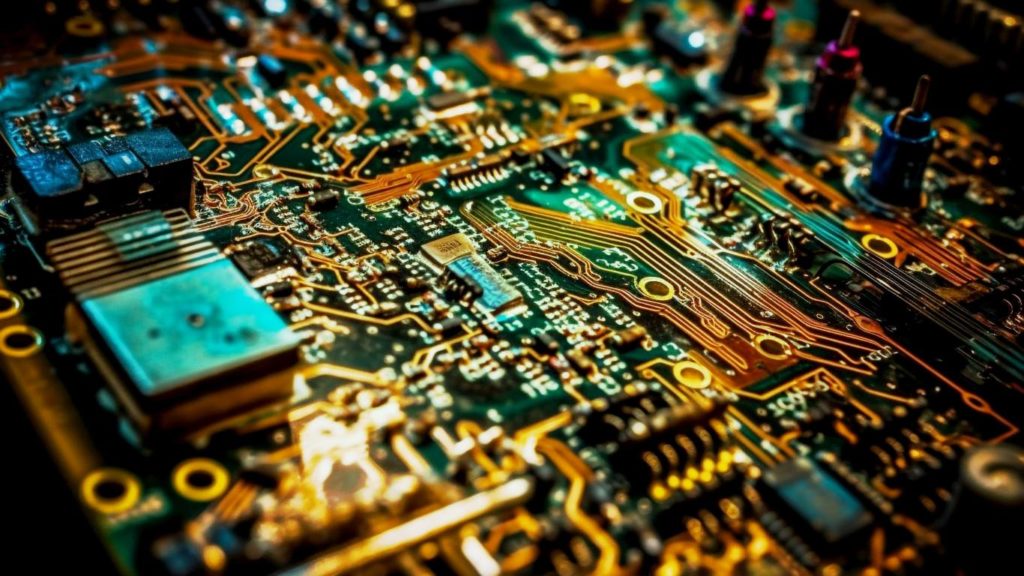
There are some career options that are very popular, engineering is one such option. Innovation rules the world, and that’s how we are able to improve our lives. And, the role of engineering technology in this process is to drive innovation. Many scientific principles are integrated with practical research to acquire more knowledge. Engineering is so much more than this, we have multiple types that aim at solving problems. There are subfields in engineering, making the process of selecting the right type of engineering difficult for you. We can say that in simple words, engineering is about creating, building, or designing things.
Quick Answer: Engineering Types
Engineering types include mechanical, civil, electrical, and chemical engineering. Mechanical engineers work with machines and mechanical systems, civil engineers focus on infrastructure like bridges and buildings, electrical engineers deal with power generation and distribution, and chemical engineers handle chemical manufacturing processes.
Apart from these, there are other types such as aerospace, biomedical, environmental, computer, and industrial engineering.
What is engineering?
Engineering is the ability to solve technical problems by using science, math, and engineering design. It also increases the efficiency and productivity of a pre-existing system by improving infrastructure, machinery, materials, or the energy system.

Engineering is also a discipline that encompasses various specialized fields with a greater emphasis on applied math and science. It is dedicated to problem-solving and is a very practical field of study. In fact, engineering is a major contributor to the world that we currently see.
Why Engineering is important?
Irrespective of the sector you select, you’ll still find engineering everywhere. It has helped us to create a better society. You are using your smartphones, driving cars, and traveling to places. All these are made possible with engineering. We have been able to develop ways using engineering which ultimately has benefited mankind.
The list of advancements using engineering is endless, right from ending the world wars to discovering illnesses and treatments. And, even today, we are able to develop new things each day, making engineering an integral part of our lives.
Most of the developments we see today are made possible by the innovative ideas on which engineers worked to convert them into reality. They keep the constantly changing world in their mind to develop solutions to the problems, all the while ensuring that they stay relevant. Take the example of the major concern we are facing, climate change.
If left unattended, it could lead to catastrophe. This is why engineers and scientists are working towards developing technologies that can help us deal with this problem.
We can all agree that engineering is pretty important for our society. It has been held in high regard since ancient times and will also aid future generations. If you want to know more about what engineering can do for our future, then watch this video:
What are the different types of engineering?
As we have mentioned, there are hundreds of subfields in engineering. In this discussion, we will cover the broader types of engineering. Here are some of them.
1. Mechanical engineering

In mechanical engineering, engineers use principles of motion, energy, and force, using which they are able to analyze their work. You can see mechanical engineers in various sectors, including space, healthcare, and energy. Using mechanical engineering, the objects are designed to function efficiently and safely. The objects designed in this field range from small components such as sensors to large systems such as satellites.
A few of the disciplines included in mechanical engineering are aerospace, biotechnology, nanotechnology, and robotics. Aeronautics and astronautics are part of aerospace engineering. Biotechnology makes products using biology that are very helpful. With the help of nanotechnology, materials are engineered at the nanoscale. And, in robotics, machines are produced that can substitute for human actions.
Quick Facts
- Focuses on motion, energy, and force.
- Applied in various industries.
- Spans aerospace, biotechnology, nanotechnology, and robotics.
2. Civil engineering

In civil engineering, large-scale structures such as buildings and roads are designed and constructed. It is one of the most important engineering, as it is directly related to society. It ensures that we get treated water to drink and have proper drainage and irrigation channels.
Several factors such as construction costs, government regulations, and potential environmental threats are taken into consideration while designing structures. Examples of civil engineering projects are the Eiffel Tower and the Great Wall of China.
A few of the disciplines included in civil engineering are transportation, coastal, structural, and environmental. In transportation engineering, transportation systems are planned, designed, operated, and maintained to function safely and efficiently.
Coastal engineering is concerned with the development of the coast and construction at or near it. The form and shape of structures are designed in structural engineering. And, in environmental engineering, engineers develop solutions to deal with environmental concerns.
Quick Facts
- Designs large structures.
- Vital for society’s infrastructure.
- Covers transportation, coastal, structural, and environmental aspects.
3. Electrical engineering

Electrical engineering has connected our world with its valuable inventions, from light bulbs to smartphones. It is revolutionizing our world, starting from the invention of the dynamo in the early 19th century to space exploration in today’s time. It won’t be long, using engineering we can become interplanetary species.
Furthermore, engineers in this field help in powering the world through creating, designing, and managing electricity. Its applications have a wider scope, from small objects like microchips to large objects like satellites.
A few of the disciplines included in electrical engineering are computer, power, electronics, and network. In computer engineering, engineers understand the hardware as well as software of the computer and solve computer-oriented problems. Power engineering is concerned with generating, transmitting, distributing, and utilizing electric power.
We use various devices on a daily basis, including smartphones and laptops. All these electronic devices are built by electrical engineers, and electronic engineering allows the implementation of applications, principles, and algorithms. And, in network engineering, engineers perform complex tasks ranging from protecting the servers from hackers to enhancing the performance of the networks.
Quick Facts
- Powers the world through electricity.
- Includes computer, power, electronics, and network disciplines.
- Crucial for technological innovations and space exploration.
4. Chemical engineering

In chemical engineering, valuable products are made through chemical processes. An example of a process included is designing equipment and systems for refining raw materials. Various subjects are combined in this type of engineering. Some of these subjects are experimental science, life science, economics, and mathematics. The engineers perform experiments involving microorganisms, pharmaceuticals, fuel, and many more.
A few of the disciplines included in chemical engineering are biochemical, cellular, petroleum, and textile. In biochemical engineering, products and processes are developed using biological materials. Cellular engineering is concerned with biomedical applications, including regenerative medicine and tissue engineering.
In petroleum engineering, engineers use mathematics, physics, and geology to fuel the world. There are various processes involved in textile engineering, including process engineering, product control, quality control, and research and development.
Quick Facts
- Creates products through chemical processes.
- Combines science, economics, and mathematics.
- Encompasses biochemical, cellular, petroleum, and textile areas.
Comparison between different engineering types
Let us take a look at the comparison between the various types of engineering (the table will include some additional types as well):
| Discipline | Description | Use cases |
|---|---|---|
| Civil | Designing and creating infrastructure, | Roads, Dams, Bridges, Power Plants, and Buildings |
| Electrical | Related to the study of electronics and its application | Power generation, telecommunication, power distribution, electronics like TV, radio, etc. |
| Mechanical | Understanding the mechanical application of science and math | Robotics, spacecraft, airplanes, railways, cars, etc. |
| Chemical | Using chemical reactions to solve real-world issues | Medicines, vaccines, petroleum refining, and FMCG products |
| Aerospace | Related to designing and creating aircraft and space exploration | Rocket launching systems, jet fighters, airplanes, and satellites |
| Computer | Anything regarding computers | Apps, programming, website development, processors, internet |
Popular jobs in engineering
Engineering can be said to be one of the most popular sectors as far as employment opportunities are concerned. It has seen steady growth in recent years and is projected to reach $1316 billion in 2027. You can imagine its scope with the currently employed 249186 engineers in the US alone. Thus, we have listed a few popular engineering jobs below:
1. Information Technology
IT, or information technology, is one of the most popular industries, offering the most engineering jobs worldwide. IT professionals are highly required in every industry, from small-scale businesses to large corporations. They set up, maintain, and analyze the technical system of an organization, analyze data, and even help with other peripheral activities such as communications, logistics, and management.
2. Cartography
Cartographers work with geographical data. It is not an emerging industry but has seen a huge surge as more and more businesses have started researching, collecting, measuring, and storing geographical data and ground surveys. Cartographers collect all this data to create thematic maps according to the social, political, cultural, and environmental needs of an organization. These maps are also used in zoning and planning, directly affecting the economic goals of many.
3. Robotics
Robotics is the new darling of engineering. It has seen a huge shift in interest in recent years and is currently in high demand worldwide. Automation has also allowed robotics a new avenue for exploration and, with it, new opportunities for robotic engineers. The industry wants both hardware and software specialists, and the market is only going to grow.
4. Aerospace
Space is the new frontier, and while the saying is old, the industry has truly come into its own after the success of companies like SpaceX. Even Virgin Galactic has completed its first commercial space flight, paving the way for further innovation in the aerospace industry.
5. Petroleum
Yes, the world has certainly started paying attention to alternative resources and green energy, but that doesn’t mean that the petroleum sector has slowed down. Although it is predicted and almost a certainty that the industry will see a decrease due to less consumption, today it still retains a huge demand across the globe and thus requires qualified personnel.
Conclusion
We discussed different types of engineering, yet these were just the tip of the iceberg. The engineering field is vast with infinite applications. We are able to improve the quality of our life using engineering. There is quite a responsibility on engineers to ensure that their developed solutions are beneficial. And, if there is a possibility that it can have unintended consequences, then they must address it on priority.
The developments made by engineers should stand the test of time, and save the lives of people involved in it, in times of disaster. Considering the direct relation of engineering to our lives, it will continue to be an important field.